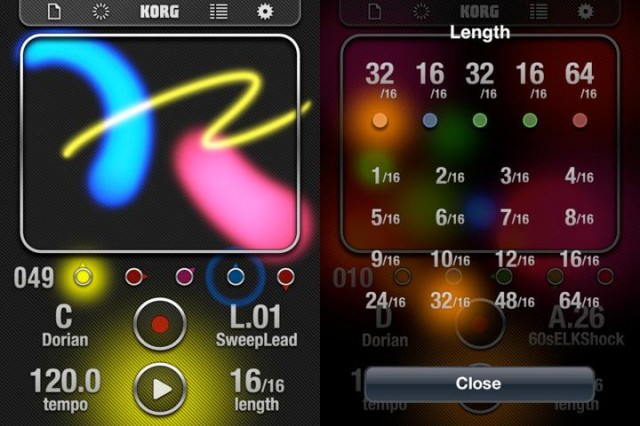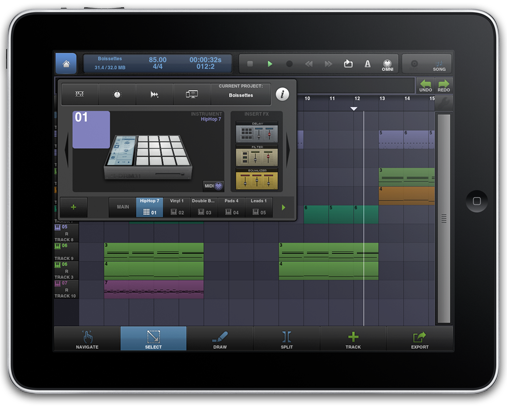The stream of iPad and iPhone apps for musicians gushes endlessly, but among that river of software, there are some visible trends. Demanded by users, features for sharing between apps – and other mobile artists – flourish.
Hardware heavyweight KORG has been one of the developers that’s been especially good at offering that kind of support. Their just-announced iKaossilator 2 app adds native iPad screen support (previously iPhone-optimized only), and a new “flex play” for fills and breaks.
But most notably, it offers options for sharing:
- Audio export for saving your audio – ideal for use elsewhere or sharing
- SoundCloud export (increasingly popular in desktop and mobile software of all stripes)
- AudioCopy for sharing audio between apps – adopted by many indie developers, this feature is becoming a demanded addition even if you’re releasing an app costing only a couple of bucks
This is addition to WIST, “WIreless Sync-starT,” Korg’s mechanism for syncing up multiple wireless apps. That’s ideal if you’ve got a friend with a device and want to jam. (It’s, unfortunately, iOS-only based on its reliance on Apple’s wireless sharing tech.)
The upshot of all of these features is, naturally, to help ease the tablet/phone app into the larger workflow, with desktop software and other tools. Korg’s other apps are similarly flexible – their iMS-20 synth works with MIDI and SoundCloud, for instance, and it and iElecTribe will wirelessly sync.
KORG isn’t alone. An updated Intua BeatMaker – more of a full-fledged beat-making and groove production workstation – added loads of similarly sharing-focused features.
Indeed, Intua goes further than KORG. Developers have been working together to route MIDI signals between apps with something they’re calling Virtual MIDI. (That deserves its own article, clearly, but worth mentioning in this context; see discussion on Google Groups.) As desktop apps have allowed collaboration between plug-ins and hosts, or multiple apps, this allows a MIDI app to control a synth app. It’s less powerful, arguably, on the limited horsepower of an iPad than it might be on a beefy desktop, but it can still be very useful for combining one controller or sequencer with something else that makes sound.
As reported on Synthtopia, Virtual MIDI is just one of a number of MIDI-centric features in the new version:
BeatMaker Getting All Sorts Of MIDI Love [Synthtopia]
There’s MIDI Out, yes, but also Thru and MIDI-over-WiFi for talking to other MIDI gadgets. There’s Virtual MIDI for communicating with other iOS devices. You can hot-plug MIDI and the app keeps working (essential onstage). And in place of SoundCloud support as in the KORG offering, there’s Dropbox file sharing support.
You can export and import MIDI – not just audio, but actual patterns – as well as read and write slice points in Apple Loops.
In fact, Intua even support Korg’s own WIST, so you could sync BeatMaker to KORG’s iElecTribe or the modulation of the iMS-20 and get synchronized rhythms between apps from different developers.
This is not to say iOS devices are identical to a desktop experience – in fact, their limitations and unique features are clearly part of their appeal. Instead, it seems part of an increased awareness that connectivity with other applications and other users is of growing importance to musicians. iOS developers seem eager to make these central design features, both emulating what’s been done right on desktops – and where there have been missed opportunities. It’ll be fascinating to see if other, non-iOS platforms follow the same trend.

